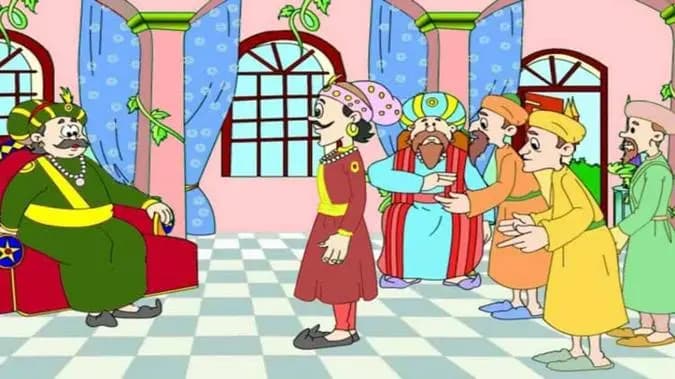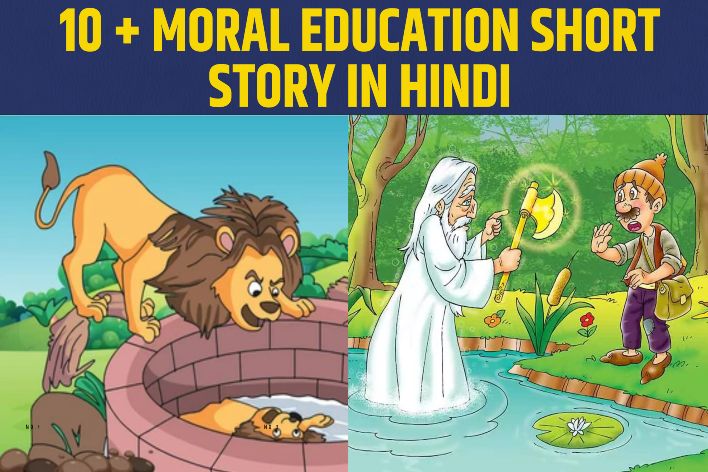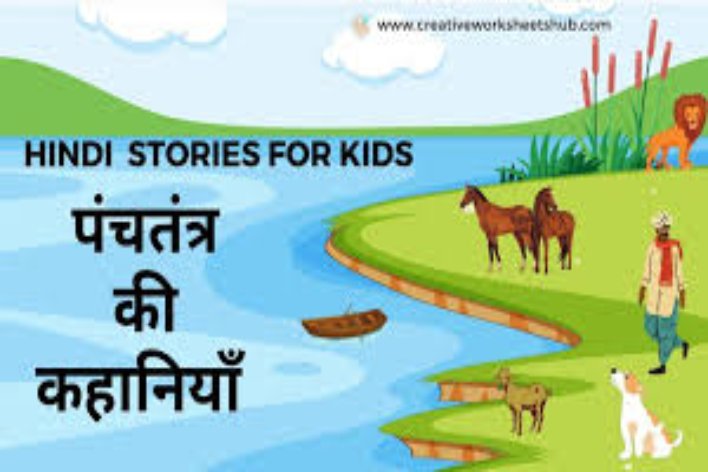Folktales and Hindi stories for kids
By Pinkey Sharma |
Date 08-08-2024

Table of Contents
- What Makes Hindi Stories for Kids Special
- Very Short Hindi Stories
- Hindi Traditional Stories
- Short Folktale Stories in Hindi
- The Role of Folktales in Education and Culture
- The Tradition of Hindi Storytelling
- The Art of Hindi Storytelling
- Hindi Storytelling Techniques
- Hindi Storytelling inToday’s world
- Conclusion
- Frequently asked questions:
Admissions Open for
The world of Hindi stories and folk tales that have come down through generations carries with it an ocean of knowledge, culture, and entertainment. Hindi stories are a part of our very rich heritage, priding themselves on great moral values that are an essential part of Indian civilization. In this blog, we will explore the world of Hindi stories for kids, discuss some short folktale stories in Hindi, and the art of Hindi storytelling. We will introduce traditional stories in Hindi that have prevailed through the test of time.
What Makes Hindi Stories for Kids Special
Most Hindi stories are not only innovative but they are full of educative and motivational content. These stories are, more often than not, integrated with the aspect of moral values like honesty, kindness and courage in its context. Below is a list describing some of the most popular Hindi stories for kids.
Panchatantra Tales
Panchatantra is one of the most famous collections of Indian fables. It is, indeed, a real treasure, in which the number of stories with animals as characters had to teach children quite important and useful life lessons and morals.
The story of "The Lion and the Rabbit" implants in children's minds that wit and intelligence are stronger than muscle power. When a lion in the jungle starts killing off animals at random, a smart rabbit thinks of an idea to outsmart the lion and save the other animals from his clutches.
Akbar-Birbal Stories
The stories of the repartees between Emperor Akbar and his wise wazir Birbal are simply legendary. Many a thing about the quirks of human nature and why we need intelligence and wisdom in our lives gets taught through these stories. Not only do these stories amuse, but they also teach a lot about the quirks of human nature.
Example: One day, Akbar challenged Birbal to make a line smaller without touching it. The line was large and extended long, but Birbal managed to make it appear smaller by drawing a longer one beside it. So sometimes, perspective and creativity means a lot.
Jataka Tales
These are stories of previous births of Buddha. In many of the stories, animals are the main characters, the stories all about acting with compassion and wisdom show self-perfection for common good of all creations.
Example: "The Monkey and the Crocodile," which is a story about cleverness and presence of mind. The crocodile tries to dupe the monkey into being his dish, but with wit, the monkey manages to elude.
Very Short Hindi Stories
Folk tales collectively represent the heritage of culture in India. These small stories, transferred through oral means, have essentially retained in themselves all what is stereotypically accepted as "traditional wisdom and values." Some of the classics examples in Hindi folk tales are given here:

The Thirsty Crow
It is a classic folktale told and retold in many languages: "The Thirsty Crow" teaches one the value of unyielding effort and cunningness. Once upon a time, there lived a thirsty crow in a jungle. The crow hovered over a desert and, tiring of flying around, at last let down its wings and made a dolorous speech.
The Clever Jackal
This is a story about presence of mind or wit. When a jackal falls into a well, he cajoles a goat into jumping in, and after that, he makes good his escape by climbing on his back. The moral drawn from this story is that think before doing an action.
The Tale of the Four Friends:
This is an anecdote of four friends, namely the mouse, the crow, the deer, and the turtle, who come to rescue one another whenever they are in danger. It helps teach a lesson in friendship and cooperation.
Vikram and Betal
Written about the legendary King Vikramaditya and Betal, this series goes on to present Betal telling Vikram a story, which usually ends with a riddle. This is something Vikram is to solve. Mysterious and interesting, these tales reveal many layers of the workings of the human brain and heart about morality.
Hindi Traditional Stories
India is among the lands whose literature is very rich from ancient times. According to this, it has very many traditional stories from which most have been passed from time to time. The tradition of stories reflects most of the cultural and social values up to today.
The Ramayana
This love, duty, and righteousness-filled tale is one of the most amazing epics of Hindu mythology. It tells of Lord Rama, his wife Sita, and his devotee Hanuman. This epic portrays the triumph of good deeds over evil ones and is enforced with loyalty and courage.
The Mahabharata
Another epic is the Mahabharata, where there is a rather complicated story about family conflict, duty, and morality. Embedded within is the Bhagavad Gita, a philosophical dialogue between Prince Arjuna and Lord Krishna, which poses the questions regarding dilemmas of morals.
Vikram and Betaal
These stories revolve around the wise King Vikramaditya and a ghost named Betaal. Each story has some moral or ethical dilemma which King Vikram is challenged to solve. Quite many have ended with Betaal flying back to his tree and with that, forced Vikram to start afresh, thereby laying emphasis on perseverance and wisdom.
Short Folktale Stories in Hindi
Indian folklore is full of mysterious and interesting stories that have been passed from generation to generation. Most of these stories are about supernatural elements, moral dilemmas, and their respective profound lessons. Here are a few notable examples:
1. The Legend of Bhangarh Fort: Bhangarh Fort in Rajasthan is said to be one of the most haunted places in India. According to the tale, a magician who was in love with the native princess put a curse on this fort. A disaster afterwards destroyed the township, and it is said the spirits of the people who were so cursed are still haunting, in the ruins.
2. The Story of Kuldhara Village: As a matter of fact, Kuldhara village is located in Rajasthan, and legend says it is cursed. In this legend, the Paliwal Brahmins deserted the village on one dark night to escape from the ruler who wanted a girl of that village for himself and, while leaving, cursed the village so that no one can ever stay there.
3. The Curse of the Nale Ba: Karnataka tells the scaresome tale of a female spirit who, in vengeance, goes out into the streets at night. To save themselves, people write on their doors, "Nale Ba" (come tomorrow) - the ghost, it is said, is gullible enough to fall for it. This story well represents the fear- cum-superstition that is involved in most Indian folktales.
The Role of Folktales in Education and Culture
Folktales have a very vital and direct implication for an educational point of view and in the area of heritage conservation. In folktales, children learn what the ideals and customs of one's culture are going to be through the most captivating stories. There are very captivating ways to teach a lesson of honesty, bravery, wisdom, and good conduct in the stories of Akbar-Birbal and Panchatantra.
These stories further develop a sense of identity and belongingness. They relate man to his cultural heritage and enable him to understand the history and social background of his community. Being a multicultural nation like India, with its own folklore rooted in different regions, they also foster diversity and respect for one another.
Stories and folk tales in Hindi are not just records or stories; they integrate the finer features of preservation of culture, inculcation of value systems, and entertainment within. This has been said, they serve the following vital purposes:
Cultural Inheritance
These stories help in maintaining and transferring the rich cultural heritage of India from one generation to the other, manifesting the pre-eminent traditions, customs, and beliefs of the people. They also help in perpetuating the history and harnessing the folklore of the different geographical entities prevalent in the nation.
Recreational
Furthermore, most stories in Hindi have morals and lessons; therefore, they inculcate morals such as honesty, bravery, and kindness from a young age. They also combine wisdom in many respects, which, therefore, are a means of moral education used for the correction of character and behavior.
Language Development
Listening to and reading Hindi stories serves as the development of the language itself, in terms of vocabulary, comprehension, and pronunciation, and it arouses interest in the language itself and its literature.
Entertainment and Imagination
Stories are feeding the imagination and can serve as a means of entertainment. They transport listeners and readers to worlds other than their own, allowing them to experience adventures, emotions, and situations beyond what happens around them in their daily lives.
Hindi storytelling and folktales embody a rich cultural heritage of India. They contain collective wisdom, tradition, and values that have been passed down for generations and have become a part of local culture. Basically, they provide the idea of the societal norms and beliefs followed by the people at their times. They provided entertainment and education to the children; they taught them morals and lessons to be followed in life.
The Tradition of Hindi Storytelling
Hindi storytelling, also otherwise referred to as "kahani sunana", is a hallowed tradition in India. In essence, it comprises the telling of stories with rather theatrical mime, declamatory intonation, and sometimes musical accompaniment. Such a mode of telling stories not only engages the audience but also enhances memorization of those very tales to be handed from generation to generation.
Hindi folktale is traditional and easy to handle. Most Hindi traditional stories revolve around folklore, mythology, and history. These are known for their simplicity, lessons in morals, and cultural importance. Such stories involve animals, gods, and ordinary people in extraordinary circumstances, reflecting an Indian life rich in texture and Indian beliefs.
The Art of Hindi Storytelling
Hindi storytelling is considered an art of telling a story through narration and expressions. Sometimes, even music and dance are juxtaposed to bring life to stories. This way, story sessions may be very engaging sessions for not only children but also adults because it is easily memorable and impactful as well.

Hindi Storytelling Techniques
1. Expressive Narration: The good storyteller modulates his voice expressively and similarly uses appropriate body language for bringing alive the story. Thus, one can decrease or increase the tone of voice and the pitch to keep up with the different characters and emotions and ensure audience interest.
2. Incorporating Songs and Rhymes: Traditional Hindi storytelling is interspersed with songs, rhymes, and repetitive phrases. These make the story more entertaining and easy to remember.
3. Interactive Storytelling: Breaking a monotony with a question or asking for participation, it makes the storytelling session very interactive and fun. This works more efficiently on children.
4. Props and Visual Aids: To spice or liven up the story, the props or puppets or visual aids always help a lot.
Hindi Storytelling inToday’s world
Hindi storytelling, in the contemporary period, has undergone several changes but they form an integral part of Indian culture. Brought about by technology, today these stories are shared through various media such as books, TV, and the Internet. Professional storytelling sessions where the story is narrated to a group of people assembled in a single location are also becoming very popular, especially in cities.
In addition, most schools and other educational institutions include storytelling as a part of their course of study to make learning more interesting and interactive. Storytelling develops listening, imagination, and creativity among kids. It also enables them to think critically and be creative in solving problems by analyzing the story and the intended message.
Conclusion
Hindi storytelling and folktales form the very fabric of India's cultural traditions. They act as that bridge between the past and the present, carrying forward all the wisdom and values from past generations. One finds, in these stories, exciting plots, moral lessons, and mysterious elements that enchant and enlighten listeners of all ages to this day. From the timeless tales of Panchatantra, the witty exchanges of Akbar and Birbal, to even the eerie legends of haunted places, the world of Hindi folktales is truly rich and varied.
The world of Hindi stories and folk tales is big and rich in content: it amuses and gives moral education, thus fulfilling the task of cultural preservation. The stories of Panchatantra and Jataka are beguiling, whereas the stories of Akbar and Birbal are wise and comic, yet all these stories have the power of holding the audience spellbound for many years. Art in Hindi storytelling breathes life into the stories and makes them most appealing and effective. Reading the folklores of Hindi would surely be an enchanting experience with great educative value. So, go on and explore Hindi storytelling and folk tales and let the magic of these tales take you to another world.
Frequently asked questions:
1.What is the famous Hindi folklore?
Ans. Noteworthy collections of Indian traditional stories include the Panchatantra.
2. What is the difference between storytelling and folktales?
Ans.Folktales are stories in the oral tradition, or tales that people tell each other out loud, rather than stories in written form.
3. What is folktale example?
Ans.Examples of some short folktale stories in hindi are: legend of bhangarh fort,story of kuldara village and the curse of Nale Ba
4. Which is Indian famous folktale?
Ans. Some of the most popular Jataka Tales include “The Monkey and the Crocodile,” “The Tortoise and the Geese,” and “The Clever Deer.”
Hope you found the above blog interesting,if yes then do share it in your community.
Follow our page for daily updates and more engaging content, keep smiling keep learning!
Related Blogs
Learning Hindi through songs: Learn Hindi effortlessly with lively songs and catchy rhymes.
Basics of Hindi Grammar: Understand the basics of Hindi grammar with proper explanations.
Hindi Reading and Writing Skills: Tips to Improve your Hindi reading and writing skill
CBSE Schools In Popular Cities
- CBSE Schools in Bangalore
- CBSE Schools in Mumbai
- CBSE Schools in Pune
- CBSE Schools in Hyderabad
- CBSE Schools in Chennai
- CBSE Schools in Gurgaon
- CBSE Schools in Kolkata
- CBSE Schools in Indore
- CBSE Schools in Sonipat
- CBSE Schools in Delhi
- CBSE Schools in Rohtak
- CBSE Schools in Bhopal
- CBSE Schools in Aurangabad
- CBSE Schools in Jabalpur
- CBSE Schools in Jaipur
- CBSE Schools in Jodhpur
- CBSE Schools in Nagpur
- CBSE Schools in Ahmednagar
- CBSE School In Tumkur

Call Us to know more about Orchids
Swipe Up

















